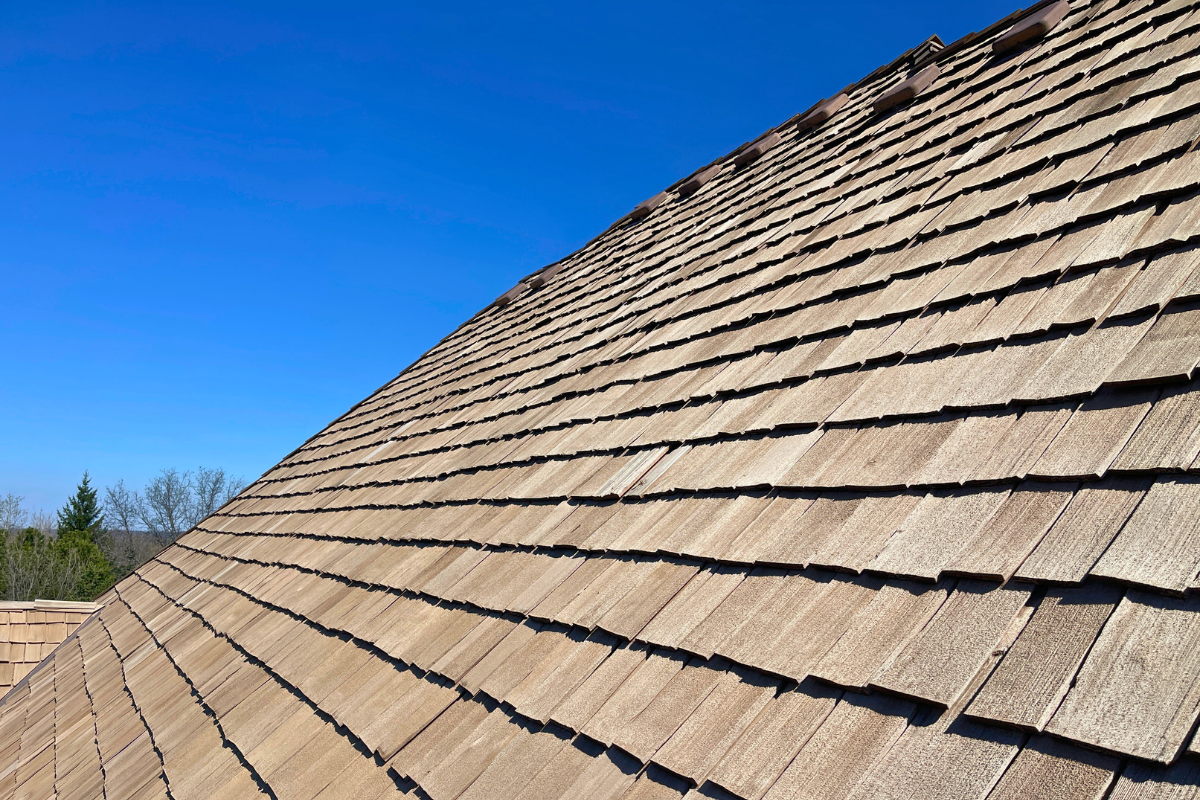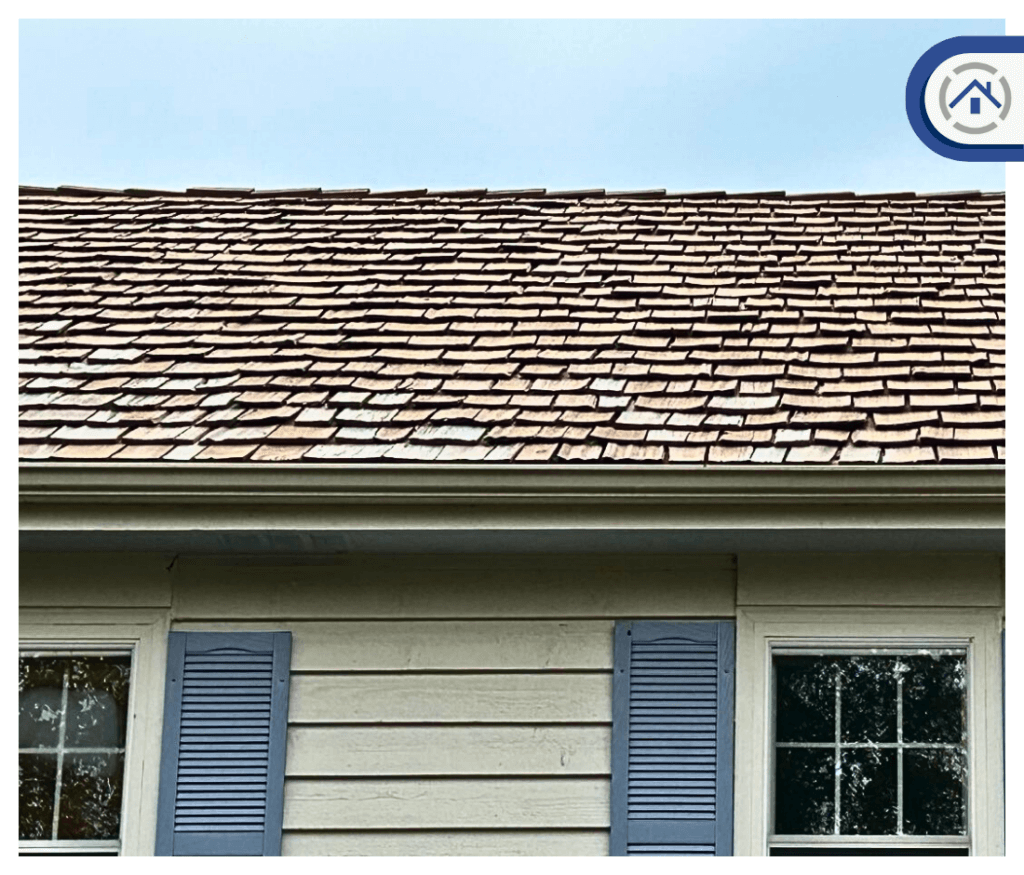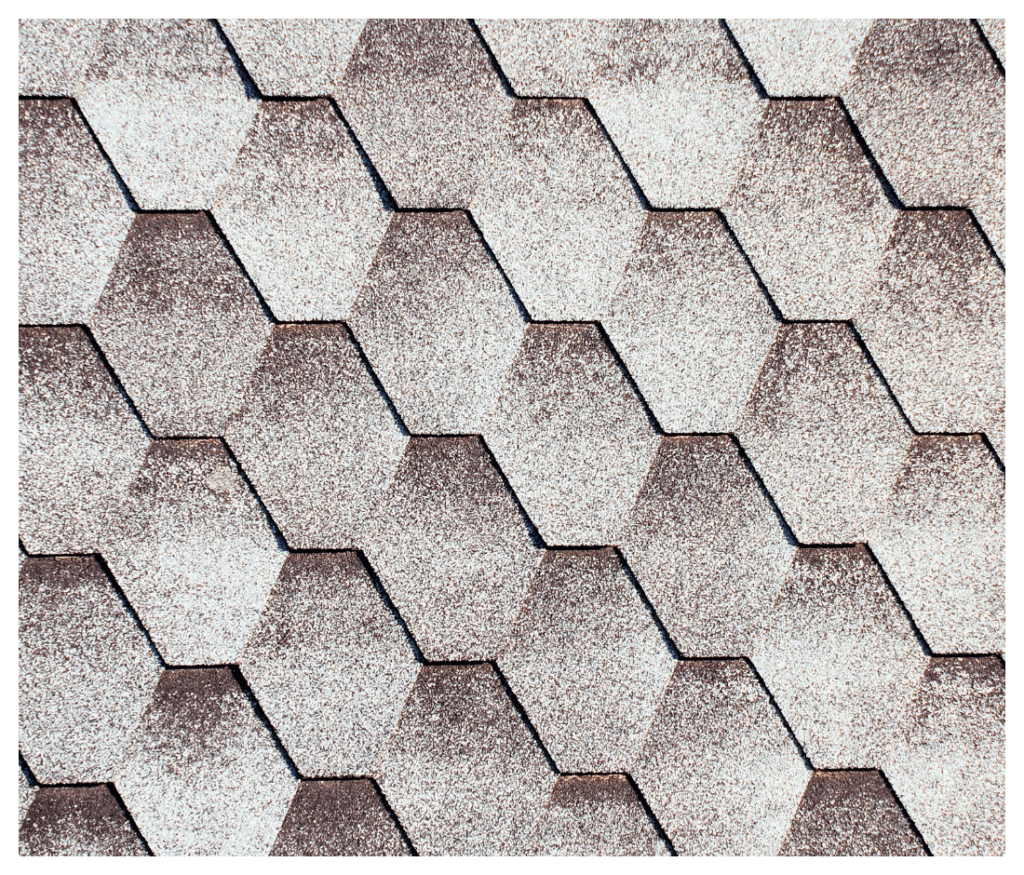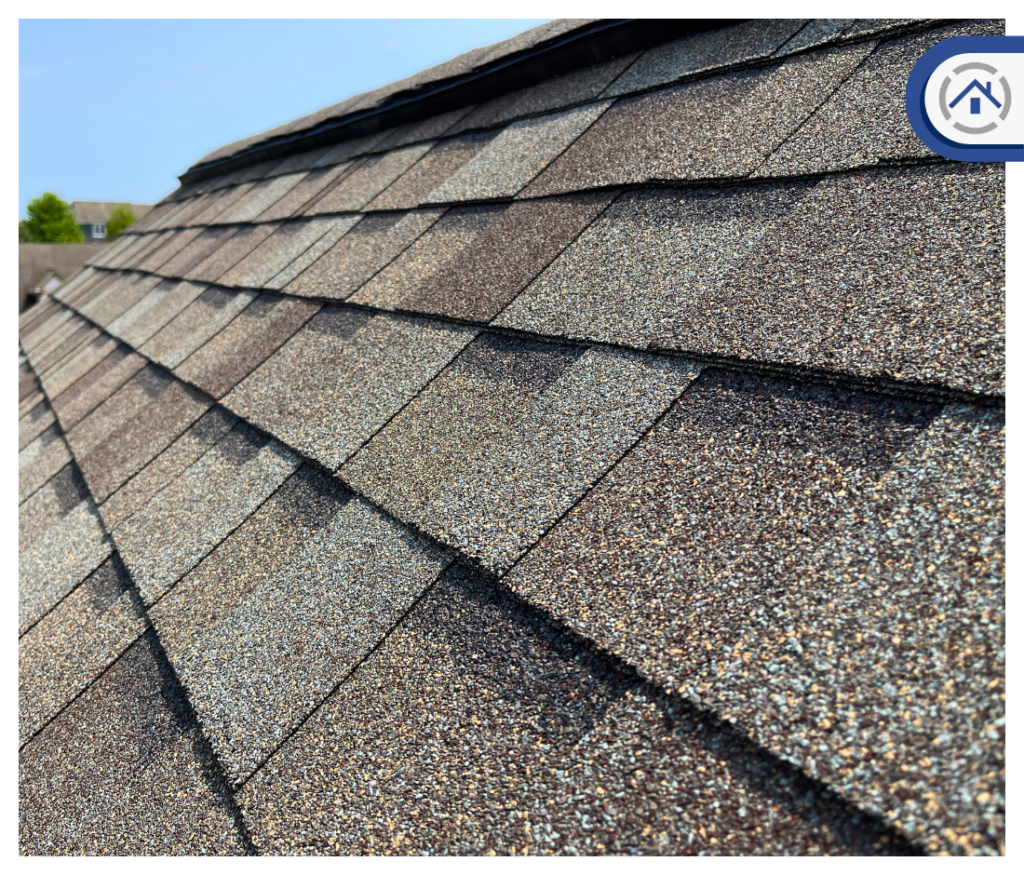Have you ever found yourself wondering about the first roofs – what shingles were made of, how folks managed to put them up, and why we don't spot them much these days? It's kind of like unraveling a bit of roofing history, right? But there's more to it than just curiosity. Understanding how roofs have come a long way from their humble beginnings isn't just for fun; it's actually pretty handy. It helps us figure out what kind of roof suits our needs now, keeping our homes snug and secure.
Let's take a trip through the story of roofs, starting from a long time ago and going all the way to today.
The history of roofing materials in a timeline fashion:
The Wooden Shake Roofs in the 19th Century:
Wooden shakes were a popular roofing material during the 19th century. They were typically made from split logs or wooden blocks. Cedar wood shakes and shingles became very popular for roofing homes and public buildings. In America, white pine was the most commonly used type of wood, but in the South, oak, and cypress shingles were more popular, and redwood and cedar were preferred in the Western US.
Advantages:
- Wooden shake roofs had a timeless and charming look, contributing to the aesthetics and character of buildings. They enhanced the visual appeal of structures, giving them a distinctive and appealing quality.
- Wooden shakes provided natural insulation, helping to regulate indoor temperatures, making them cooler in the summer and warmer in the winter.
- Wood was readily accessible during the 19th century, making wooden shakes an economical and easily obtainable roofing material.
- Wooden shake roofs proved to be durable and could withstand various weather conditions, including rain, wind, and even snow.
- Wood, as a resource, is renewable, and using it for roofs was an environmentally friendly choice, aligning with sustainable practices.
Disadvantages:
- Wooden shakes were highly susceptible to catching fire as they aged and dried out—a major concern during a time when firefighting technology was less advanced.
- Wooden shake roofs could suffer from problems like rot and decay. Longevity depended on proper maintenance and the regional climate.
- Regular maintenance was crucial to preserve wooden shake roofs. Maintenance tasks included cleaning, treating, and periodically replacing damaged or deteriorated shakes.
The first Asphalt Shingles of the early 1900s:
In the year 1903, Henry Reynolds, a roofing contractor hailing from Grand Rapids, Michigan, is acknowledged for originating the asphalt roofing shingle. He initiated the practice of manually cutting asphalt-soaked rolls, surfaced with stone, into separate "shingles." These initial shingles were created in the dimensions of 8” by 16”.
Advantages:
- Early asphalt shingles were more durable and weather-resistant than materials like wooden shakes, offering a longer-lasting roofing solution that could withstand the elements effectively.
- They provided better fire resistance than wooden shakes, a significant safety advantage.
- The primary driver of asphalt shingles' popularity was their cost-effectiveness. They were a more affordable roofing option in contrast to traditional materials like slate or clay tiles, making them accessible to a broader range of homeowners.
Disadvantages:
- Early asphalt shingles had a short lifespan and were less durable than modern shingles, which required more frequent maintenance due to their reduced quality and durability.
- These shingles offered limited design and color options compared to contemporary roofing materials.
- They were prone to cracking over time, diminishing their longevity.
- Early shingles lacked effective UV protection, making them prone to sun damage and fading.
- Installing these shingles was more challenging and time-consuming due to the shingles' weight.
- The materials used were less environmentally friendly, raising ecological issues.
The Hexagonal Shingles from 1929 or earlier:
Hex shingles, also known as hexagonal shingles, were a distinctive type of roofing material introduced in 1929 or earlier. They are characterized by their unique shape, which resembles a honeycomb or hexagon pattern. These shingles were typically made from materials like asphalt and had a design that allowed them to interlock with one another.
Advantages:
- Hex shingles' hexagonal shape made them popular for certain architectural styles due to their striking and unconventional look for roofs.
- Hexagonal shingles were designed to interlock, creating a weather-resistant, secure roofing surface. This interlocking design enhances wind resistance and prevents water leakage.
- Hex shingles, made from relatively affordable asphalt or similar materials, were popular then.
Disadvantages:
- Although hex shingles were durable, their design and interlocking system could pose challenges in terms of maintenance and repairs if damage occurred.
- In the 1930s, hex shingles were a popular roofing option, and they continued to be used until the mid-20th century. However, they eventually became less popular because of their complex installation process and the availability of more convenient and cost-effective roofing materials.
The T-lock Shingles from the 1930s:
T-lock shingles made their debut in the 1930s and were also referred to as T-lock or tab shingles, with a defining feature being their unique "T" or "I"-shaped tabs that securely link with each other, forming a stable roof surface. They were conceived as a type of roofing material designed for interlocking. These shingles were distinguished by their greater thickness and weight, owing to a higher asphalt content.
Advantages: The defining feature of T-lock shingles is the way they interlock with each other. T-lock shingles were developed with enhanced wind resistance in mind. Their interlocking design made them less susceptible to being lifted or torn off by strong winds, which was a common problem with earlier roofing materials.
Disadvantages:
- T-lock shingles became brittle due to their high asphalt content, which made them more prone to cracking and damage over the years.
- These shingles offered limited design and color choices compared to contemporary roofing materials.
- Installation of T-lock shingles required more time and precision due to their interlocking design, potentially raising labor costs and installation time.
- Maintenance and repair were challenging due to the interlocking tabs, often necessitating the costly removal and replacement of entire sections when damage occurred.
- T-lock shingles were heavier than some modern roofing materials, which sometimes required additional roof structure reinforcement to support the added weight.
- The production of T-lock shingles involved a high asphalt content, which raised environmental concerns due to asphalt's limited eco-friendliness.
The Modern Shingles:
Modern asphalt shingles are the most commonly used roofing material in the United States and many other parts of the world. They have evolved significantly from their earlier counterparts.
Modern asphalt shingles are typically made from a fiberglass or organic mat, which is coated with asphalt and embedded with ceramic granules. The fiberglass mat provides strength and stability, while the asphalt offers waterproofing and UV protection. The ceramic granules add color and further protect the shingles from UV rays.
Advantages:
- Modern asphalt shingles offer a wide variety of styles, colors, and designs, allowing homeowners to select shingles that complement their home's architecture and satisfy their aesthetic preferences.
- These shingles are also engineered for exceptional durability, capable of withstanding diverse weather conditions, including wind, rain, hail, and extreme temperatures, often accompanied by reassuring warranties.
- Their precise installation process reduces labor costs and time, particularly when compared to older materials like T-lock shingles.
- Modern Asphalt shingles are cost-effective, making them a popular choice for budget-conscious homeowners.
- Modern asphalt shingles are more eco-friendly than their predecessors because they increasingly incorporate recycled materials and employ production processes aimed at reducing environmental impact.
- Some are designed to be energy-efficient, reflecting sunlight and heat to reduce cooling expenses while requiring minimal maintenance.
- They often feature fire-resistant properties, providing extra protection for homes.
Advantages:
- The production and disposal of asphalt shingles can have negative environmental consequences.
- They are susceptible to algae and moss growth in humid areas, affecting their appearance and longevity.
- Despite improvements, they can still be vulnerable to wind damage and impact from severe weather conditions.
- Periodic inspections and maintenance are required to address issues like loose or damaged shingles.
- They provide limited insulation compared to other roofing materials.
- The color and appearance may change over time due to exposure to UV rays and the elements.
- Recycling old asphalt shingles can be difficult due to the materials used in their construction.
Designer Shingles Series:
Designer shingles are a premium category of asphalt shingles designed to enhance a roof's aesthetic appeal and durability. These shingles are known for their high-quality materials, unique designs, and advanced manufacturing processes.
Advantages:
- Designer shingles are crafted from sturdy fiberglass mats, several layers of asphalt, and top-quality granules that provide excellent weather resistance and durability.
- Designer shingles offer improved durability against wind, hail, and UV radiation and are backed by extended warranties from the manufacturer.
- Designer shingles often feature a layered, dimensional design, adding texture and depth to the roof while providing improved wind resistance and water-shedding capabilities.
- Some designer shingles are energy-efficient with cool roofing technology that reflects sunlight and heat, reducing cooling costs in hot climates.
- Homeowners have a wide selection of styles and colors to match their architectural preferences and enhance curb appeal.
Disadvantages:
- Since designer shingles are a premium roofing option, they are more expensive than standard asphalt shingles.
- Their intricate design and layered construction require professional installation, adding to the overall expense.
- Although efforts are made to reduce environmental impact, the production of asphalt shingles still raises ecological concerns due to the use of asphalt and other materials.
The colored granules:
Granules were initially incorporated into shingles during the early 1900s, primarily serving the purpose of enhancing the shingles' durability. Ceramic granules were introduced several decades later, presenting a wide array of color choices that were previously unavailable. Colored granules in asphalt shingles serve a dual purpose: they define the shingles' appearance, offer a wide array of color options, and provide crucial UV protection, fire resistance, and durability against environmental factors. These granules act as a moisture barrier, inhibit algae and moss growth, and some even support cool roofing for energy efficiency, reflecting the industry's shift towards sustainability with recycled materials.
Modern Shingles vs Old Shingles:
Here are the primary differences between early and modern shingles involving their materials and installation procedures.
Manufacturing:
In the early 20th century, the manufacturing of asphalt shingles involved a process where a base of felt or paper was saturated with multiple layers of asphalt. These layers of asphalt were applied one after the other, resulting in a built-up roofing material. Stone granules were added to the surface to offer some protection against the elements.
Modern asphalt shingles, in contrast, are typically crafted using a fiberglass or organic mat. This mat is coated with asphalt and embedded with ceramic granules, which enhance the shingles' visual appeal and serve as a protective layer against ultraviolet (UV) rays and weathering.
Installation:
Installing early asphalt shingles, regardless of their specific design, was demanding and time-consuming. Each shingle had to be meticulously applied one by one, and they often featured intricate designs, sometimes involving interlocking mechanisms. Achieving precise alignment and secure fastening was crucial to prevent wind uplift.
On the other hand, Modern asphalt shingles, across various designs, are significantly easier and faster to install when compared to older shingle types. They are generally installed in rows, beginning at the eaves and working upwards towards the roof's peak. Each shingle is securely attached in place, often featuring user-friendly interlocking tabs or slots that simplify the alignment process. Manufacturers frequently include guidelines to help roofers attain proper alignment. These advancements in the installation process have played a substantial role in the widespread popularity of modern asphalt shingles as a roofing material.
CONCLUSION:
Significant advancements have marked the evolution of roofing materials. Early roofing materials were labor-intensive and had limitations in terms of both aesthetics and functionality. In contrast, modern roofing materials are designed for enhanced visual appeal, durability, and straightforward installation. The utilization of specialized components like colored granules further demonstrates the industry's commitment to improving functionality, ensuring weather resistance, and promoting sustainability in roofing solutions.
It's worth noting that while modern roofing options have come a long way, homeowners and builders are advised to consult with experts to determine the best roofing solution for their specific needs and preferences. This ongoing evolution in roofing materials reflects a dedication to providing more efficient and environmentally conscious options, with the guidance of experts ensuring the most suitable choice for each project.




